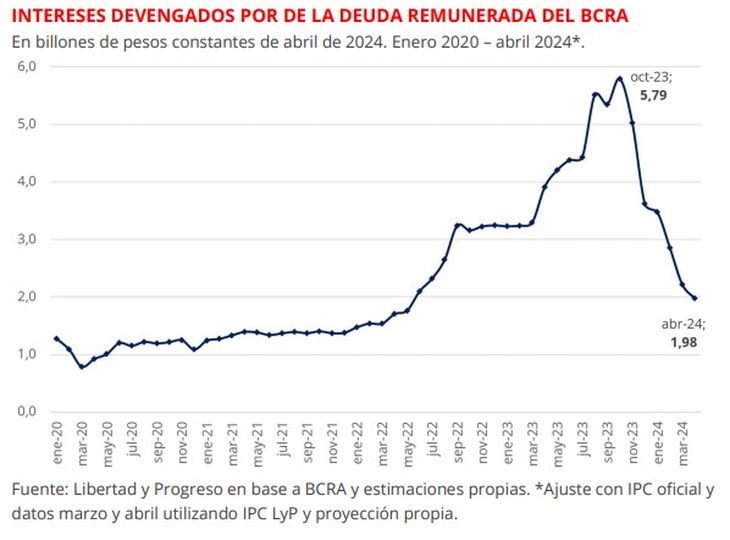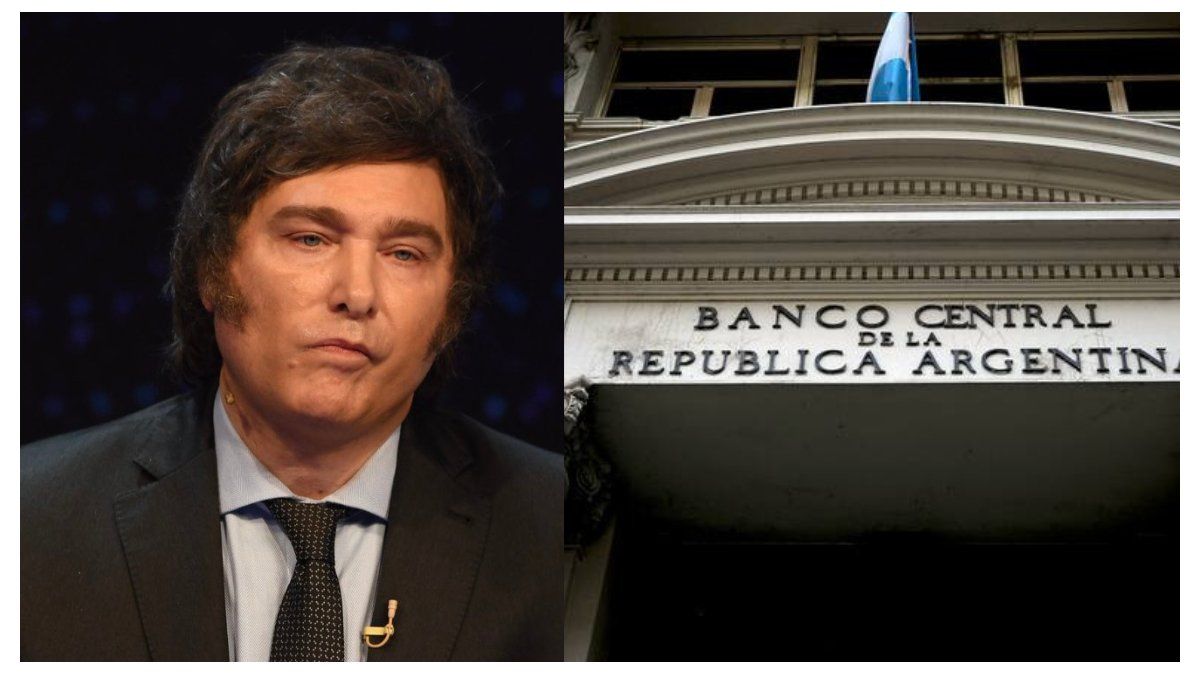This evolution places the BCRA’s cost for paid debt services at 5.4% of the Gross Domestic Product (GDP), which is equivalent to 3.9 percentage points less than in December 2023, when it represented 9.3 % of the product.
Blender to the maximum: in four months, the Government of Javie Milei lowered the interests that the BCRA pays to banks by more than 45%
In April 2024, the interest accrued per month on the remunerated debt of the Central Bankcomposed entirely of Passive Passes, reached $1.98 billion. Adjusted for inflation, This amount represents a reduction of 45.4% compared to December 2023 ($3.62 trillion at current prices) and a decrease of 66% compared to the maximum reached in October 2023 ($5.79 billion at current prices).
The content you want to access is exclusive to subscribers.
This evolution places the BCRA’s cost for paid debt services at 5.4% of the Gross Domestic Product (GDP), which is equivalent to 3.9 percentage points less than in December 2023, when it represented 9.3 % of the product.


The data comes from a report carried out by the Freedom and Progress Foundation (LyP), which maintains that, to understand this trend, it is crucial to analyze three factors:
- Stability in the stock of remunerated debt, which has remained at similar levels since the beginning of the mandate;
- The decrease in interest rates;
- The moderation of inflation, which experienced a significant increase in December and has been slowing since then.
Rates and inflation
The document points out that the reduction in inflation opens the door to further cuts in interest rates. One of the Government’s first actions was to reduce the rate of the BCRA’s paid debt. In January, the Monetary Policy rate, linked to the Leliqs, went from 133% to 100% TNA, while the Passes rate was reduced from 126% to 100% TNA. In March, It was decided not to continue with the Leliqs tenders and the Repos were established as the instrument of monetary policy, reducing their rate first to 80% and then 70% TNA, equivalent to a TEA of 101%.
“This reduction in interest rates, in a context of greater credibility and reduction in perceived risk,” has made it possible to reduce debt interest payments without increasing pressure on parallel exchange rates. “The current expectation is that fixed terms exceed free dollars, although they do not exceed inflation, which stimulates this type of investment,” the report warns.
WhatsApp Image 2024-04-12 at 14.29.51.jpeg

Aldo Abram, Director of the Foundation, highlighted that the government’s strategy of buying back Treasury debt that was in the hands of the BCRA has improved the solvency and liquidity of the Central Bank. Besides, consolidated the expectation that fixed deadlines They will be a more attractive investment than holding in foreign currency.
While, “future inflation expectations have also decreased significantly“. If this process is consolidated, it is likely that the BCRA will reduce the rate again in May. Lautaro Moschet, economist at the Libertad y Progreso Foundation, pointed out that “The continued decrease in inflation and exchange rate stability will allow the government to continue reducing the interest rate and, thus, reduce the remunerated liabilities of the Central Bank“.
Source: Ambito
I am a 24-year-old writer and journalist who has been working in the news industry for the past two years. I write primarily about market news, so if you’re looking for insights into what’s going on in the stock market or economic indicators, you’ve come to the right place. I also dabble in writing articles on lifestyle trends and pop culture news.




